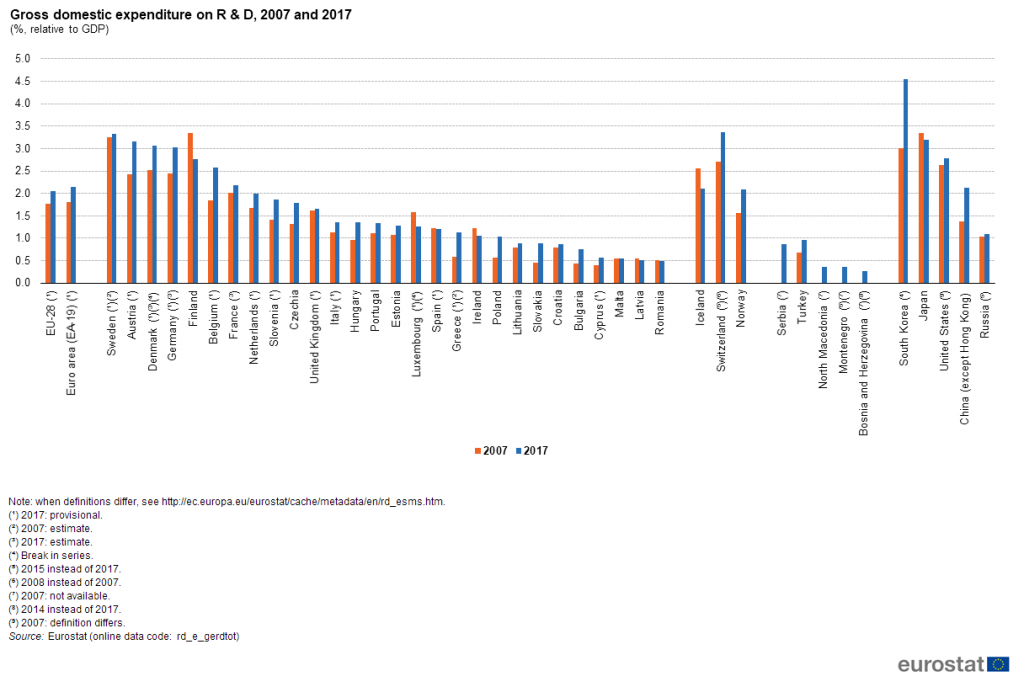4.3 The European Science and Innovation System
In this section, we will familiarise you with the European Science and Innovation system. Research and innovation are key drivers to make a better and more sustainable European Union. They can improve people’s lives through better healthcare, security, transport, digital services and contribute to the fight against pandemics, climate crisis and combat poverty and social exclusion.
All member states have their own research policies and funding schemes, with important differences existing among countries and regions in the EU with respect to the R&D as percentage of gross domestic product and performance (Figure 3) (Eurostat 2019).

Figure 3. Gross domestic expenditure on Research and Development between 2007 and 2017 in the EU-28 and all Member States. Source: Eurostat 2019.
The role of the European Commission and its interaction with member states and regions is defining R&D&I European policies and funding to work better together. Also, it aims to understand, respect and tap into the diversity of the national, including regional, research and innovation systems. Moreover, it aims to achieve a more synchronised co-evolution of R&I systems, to strengthen their quality and excellence, to reduce the existing inequalities and fragmentation and to foster connectivity, collaboration and complementarities, thus maximizing the effectiveness of the ERA at all levels (ERAC 2020).
The EU fosters Responsible Research and Innovation (RRI) where researchers, citizens, policy makers, business, and third sector organisations work together during the whole research and innovation process in order to design inclusive and sustainable research and innovation. Public engagement, open access, gender equality, ethics and science education are at the core of this transversal European policy.
We will explore briefly the EU research and innovation landscape, the framework programmes and the European Research Area
| Read more! – European Research Area and Innovation Committee – ERAC (2020) “ERAC Opinion on the future of the ERA”. ERAC 1201/20 Brussels, 23 January 2020. (Link) – Eurostat (2019). Eurostat Statistics Explained. R&D expenditure. (Link) – NextGenerationEU (2021). Available on: Link |

The material provided under this course is licensed under a Creative Commons Attribution 4.0 International License.